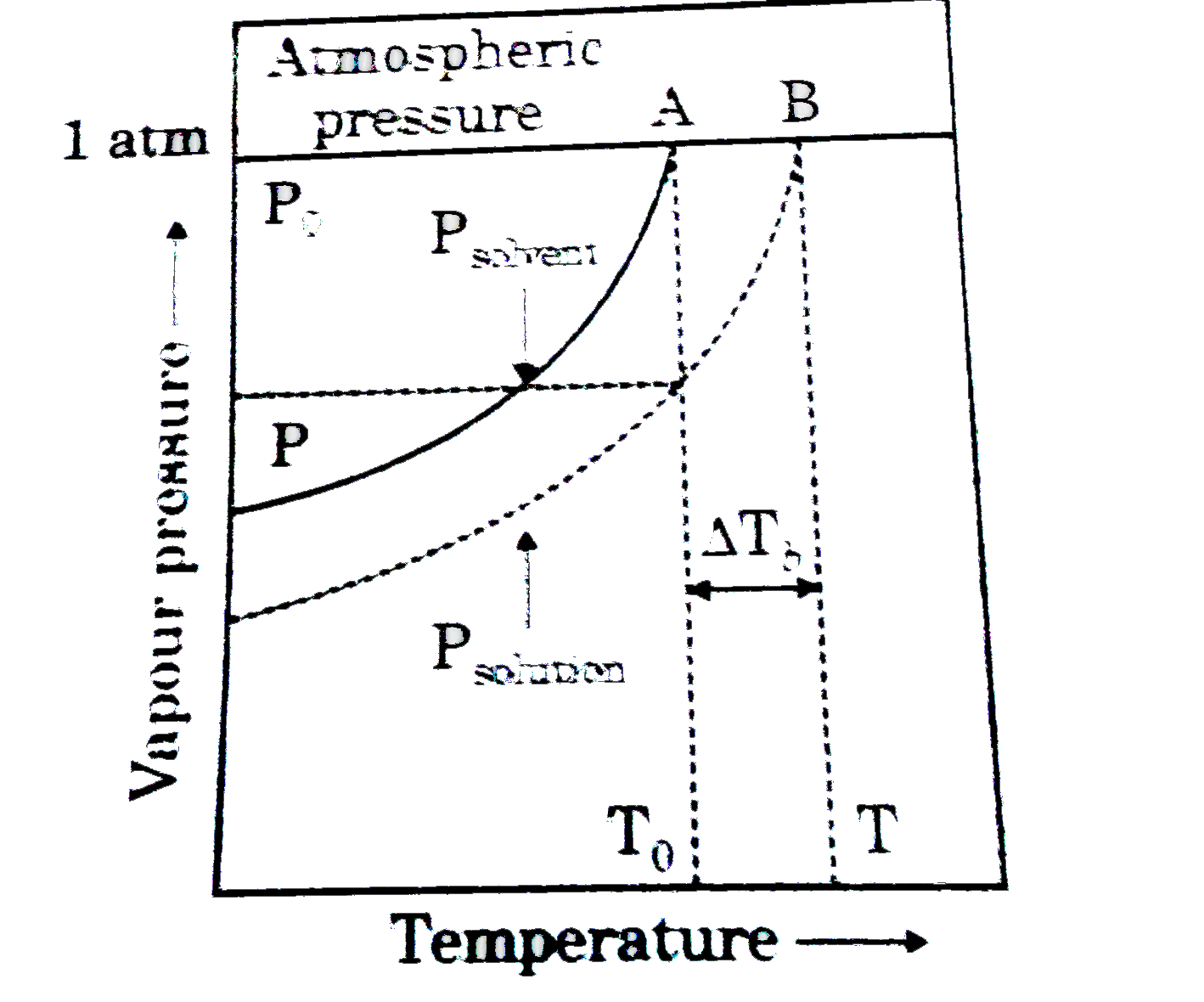A 2 molal solution of sodium chloride in water causes an elevation in the boiling point of water by . What is the value of van't Hoff factor? What does it signify ?
To solve the problem, we will use the formula for the elevation in boiling point:
ΔTb=Kb⋅m⋅i
Where:
- ΔTb is the elevation in boiling point.
- Kb is the ebullioscopic constant of the solvent (water in this case).
- m is the molality of the solution.
- i is the van't Hoff factor.
Step 1: Identify the given values
From the problem, we have:
- ΔTb=1.88K
- Kb=0.52K kg mol−1
- m=2molal
Step 2: Substitute the values into the formula
We can rearrange the formula to solve for the van't Hoff factor i:
i=ΔTbKb⋅m
Substituting the known values:
i=1.880.52⋅2
Step 3: Calculate the denominator
First, calculate Kb⋅m:
Kb⋅m=0.52⋅2=1.04
Step 4: Calculate the van't Hoff factor
Now substitute this value back into the equation for i:
i=1.881.04
Calculating this gives:
i≈1.8077
Step 5: Round the value
Rounding 1.8077 gives us:
i≈2
Conclusion
The value of the van't Hoff factor i is approximately 2.
Significance of the van't Hoff factor
The van't Hoff factor signifies the number of particles that a solute dissociates into when dissolved in a solvent. In this case, for sodium chloride (NaCl), it dissociates into two ions (Na+ and Cl−), which explains why the van't Hoff factor is approximately 2. This indicates that one mole of NaCl produces about 1.8077 moles of particles in the solution.
- ΔTb is the elevation in boiling point.
- Kb is the ebullioscopic constant of the solvent (water in this case).
- m is the molality of the solution.
- i is the van't Hoff factor.
From the problem, we have:
- ΔTb=1.88K
- Kb=0.52K kg mol−1
- m=2molal
We can rearrange the formula to solve for the van't Hoff factor i:
First, calculate Kb⋅m:
Now substitute this value back into the equation for i:
Rounding 1.8077 gives us:
The value of the van't Hoff factor i is approximately 2.
The van't Hoff factor signifies the number of particles that a solute dissociates into when dissolved in a solvent. In this case, for sodium chloride (NaCl), it dissociates into two ions (Na+ and Cl−), which explains why the van't Hoff factor is approximately 2. This indicates that one mole of NaCl produces about 1.8077 moles of particles in the solution.
Topper's Solved these Questions
- BOOK - ICSECHAPTER - SAMPLE PAPER 2014EXERCISE - PART-II (SECTION -B)15videos
SAMPLE PAPER 2014
- BOOK - ICSECHAPTER - SAMPLE PAPER 2014EXERCISE - PART-II (SECTION -C)21videos
SAMPLE PAPER 2014
- BOOK - ICSECHAPTER - SAMPLE PAPER 2014EXERCISE - PART-II (SECTION -C)21videos
SAMPLE PAPER 2014
- BOOK - ICSECHAPTER - SAMPLE PAPER 2013EXERCISE - PART-II (SECTION-C)17videos
SAMPLE PAPER 2013
- BOOK - ICSECHAPTER - SAMPLE PAPER 2015EXERCISE - PART-II SECTION-C QUESTION 10.7videos
SAMPLE PAPER 2015
Similar Questions
One molal solution of a carboxylic acid in benzene shows the elevation of boiling point of 1.518 K. The degree of association for simerization of the acid in benzene is (Kb for beznene = 2.53Kkgmol−1 ):
(a)0.6
(b)0.7
(c)0.75
(d)0.8View SolutionWhat is the expected value of van't Hoff factor for K3[Fe(CN)6] in dilute solution?
View Solution
Knowledge Check
- Question 1 - Select One
The values of van't Hoff factors for KCl, NaCl and K2SO4 , respectively , are ___
A2,2 and 2B2,2 and 3C1,1 and 2D1,1 and 1 - Question 2 - Select One
The elevation in boiling point of a solution of 9.43 g of MgCl2 in 1 kg of water is ( Kb = 0.52 K kg mol−1 , Molar mass of MgCl2=94.3gmol−1)
A0.156B0.52C0.17D0.94
A solution of urea in water has a boiling point of 100⋅18∘C. Calculate the freezing point of the solution.(K for water is 1⋅86 K kg mol−1andKb for water is 0⋅512 K kg mol−l ).
View SolutionA 1.00 molal aqueous solution of trichloroacetic acid (Cl3COOH) is heated to its boiling point. The solution has the boiling point of 100.18∘C. Determine the van't Hoff factor for trichloroacetic acid.
(Kb for water =0.512Kkgmol−1)View SolutionFigure explains elevation in boiling point when a non-volatile solute is added to a solvent. Variation of vapour pressure with temperaure and elevation in boiling point is marked.

Elevation in b.p of an aqueous urea solution is 0.52∘(Kb=0.52∘mol−1kg). Hence, mole fraction of urea in this solution is:View SolutionA solution of glycerol (C3H8O3) in water was prepared by dissolving some glycerol in 500 g of water . This solution has a boiling point of 100.42∘C . what mass of glycerol was dissolved to make this solution ? (Kb for water = 0.512 K kg mol−1)
View SolutionK2HgI4 is 55% ionized in aqueous solution. The value of Van't Hoff factor is
View SolutionThe freezing point of a solution containing 0⋅3 gms of acetic acid in 30 gms of benzene is lowered by 0⋅45K. Calculate the van't Hoff factor.
(At.wt.ofC=12,H=1,0=16,Kf for benzene =5.12 K kg mole−1 ).View Solution

